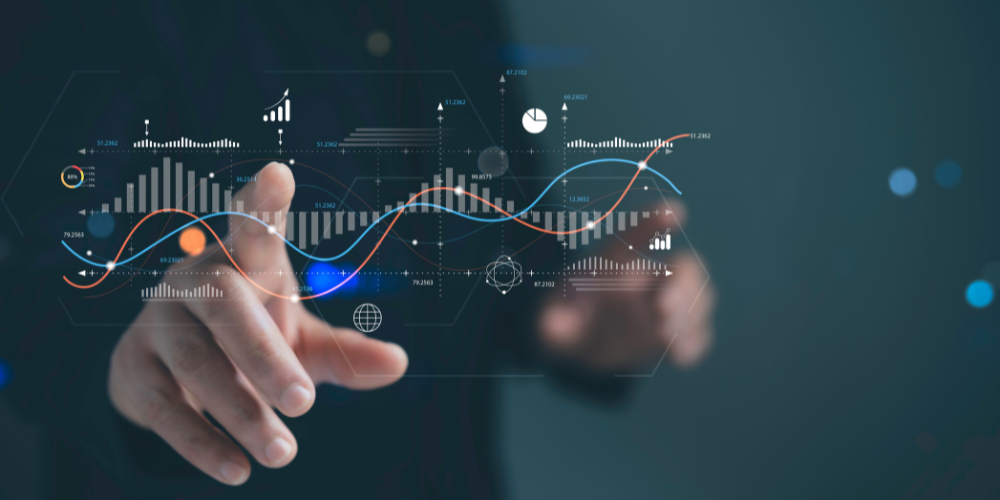
Data science is all about extracting insights from data, and effective visualization plays a crucial role in making those insights actionable. Microsoft Power BI is a powerful tool that enables data scientists to create interactive reports, automate workflows, and communicate findings effectively. Here’s why every data scientist should learn Power BI.
1. Powerful Data Visualization Capabilities
Power BI offers a wide range of visualization options, including bar charts, scatter plots, maps, and custom visuals. Data scientists can use these tools to present complex analyses in an intuitive way, making it easier for stakeholders to understand trends and patterns. The ability to create interactive dashboards enhances data storytelling and decision-making.
2. Seamless Data Integration
Data scientists work with multiple data sources, including databases, cloud services, and APIs. Power BI supports seamless integration with popular platforms like SQL Server, Azure, Python, and R. This enables data scientists to bring in data from various sources, perform transformations, and build comprehensive reports with real-time insights.
3. Advanced Analytics with DAX and AI
Power BI’s Data Analysis Expressions (DAX) allows users to create advanced calculations and perform in-depth data analysis. Additionally, Power BI integrates with Azure Machine Learning, allowing data scientists to apply AI-driven insights directly within reports. Built-in AI visuals like Key Influencers and Decomposition Tree further enhance predictive analytics.
4. Automating Reports and Dashboards
Power BI simplifies report automation, reducing manual effort. With features like scheduled refresh, data scientists can ensure that dashboards are always updated with the latest data. Power Automate integration allows workflows to be triggered based on data changes, streamlining business intelligence processes.
5. Collaboration and Sharing
Unlike traditional static reports, Power BI enables real-time collaboration. Data scientists can publish reports to Power BI Service, allowing teams to access and interact with insights anytime. Role-based access ensures data security while maintaining transparency within organizations.
6. Cost-Effective and Scalable
Power BI is a cost-effective alternative to expensive data visualization tools. The free Power BI Desktop version offers robust features, while Power BI Pro and Premium plans provide advanced capabilities like AI-driven analytics and larger data capacity, making it a scalable solution for businesses of all sizes.
Final Thoughts
Power BI is an essential tool for data scientists looking to enhance their visualization, automation, and collaboration capabilities. By learning Power BI, data scientists can bridge the gap between complex analytics and business decision-making, making their work more impactful. Start mastering Power BI today to elevate your data science skills!
This Article is Uploaded by: Gokul K
Keywords: Power BI for data scientists, Power BI data science, Power BI machine learning, Power BI analytics, Power BI data visualization, Power BI predictive analytics, Power BI artificial intelligence, Power BI and Python, Power BI and R, Power BI for big data, Power BI statistical analysis, Power BI data modeling, Power BI deep learning, Power BI for AI, Power BI and SQL, Power BI business intelligence, Power BI career for data scientists, Power BI vs Tableau for data science, Power BI vs Python visualization, Power BI for data professionals, Power BI DAX for data science, Power BI Power Query for data wrangling, Power BI for predictive modeling, Power BI for advanced analytics, Power BI for research, Power BI academic use, Power BI for data-driven decision making, Power BI automation for data science, Power BI forecasting techniques, Power BI for data storytelling, Power BI for machine learning engineers, Power BI API integration, Power BI cloud analytics, Power BI advanced statistical models, Power BI and Excel data science, Power BI and SQL Server, Power BI for data engineering, Power BI IoT analytics, Power BI real-time data, Power BI for finance analytics, Power BI for healthcare analytics, Power BI for HR analytics, Power BI for marketing analytics, Power BI for sales analytics, Power BI for government analytics, Power BI geospatial analytics, Power BI for operations research, Power BI for risk analysis, Power BI cybersecurity analytics, Power BI for social media analytics, Power BI and Power Automate for data workflows, Power BI embedded analytics, Power BI vs Jupyter Notebook, Power BI and Azure ML, Power BI and Google BigQuery, Power BI and Snowflake, Power BI and AWS Redshift, Power BI and Hadoop, Power BI and Databricks, Power BI for customer analytics, Power BI and NLP, Power BI AI-driven insights, Power BI for deep learning models, Power BI real-time dashboards, Power BI self-service analytics, Power BI for decision science, Power BI in academia, Power BI for students, Power BI for PhD researchers, Power BI open-source alternatives, Power BI integration with AI, Power BI and SQL analytics, Power BI for robotics data, Power BI for fraud detection, Power BI for credit risk modeling, Power BI for retail analytics, Power BI for supply chain analytics, Power BI for sports analytics, Power BI for environmental data, Power BI for public health data, Power BI ethics in data science, Power BI automation for research, Power BI in scientific research, Power BI open datasets, Power BI for experimental data, Power BI for bioinformatics, Power BI for climate data analysis, Power BI for genomics, Power BI for physics simulations, Power BI for astronomy data, Power BI and deep learning frameworks, Power BI academic publishing, Power BI certification for data scientists, Power BI job opportunities for data scientists, Power BI freelancer opportunities, Power BI and AI ethics, Power BI for business strategy, Power BI and Microsoft Fabric, Power BI for enterprise AI, Power BI for blockchain analytics, Power BI smart reporting, Power BI for startups, Power BI for AI-driven automation.

Leave Your Comment Here